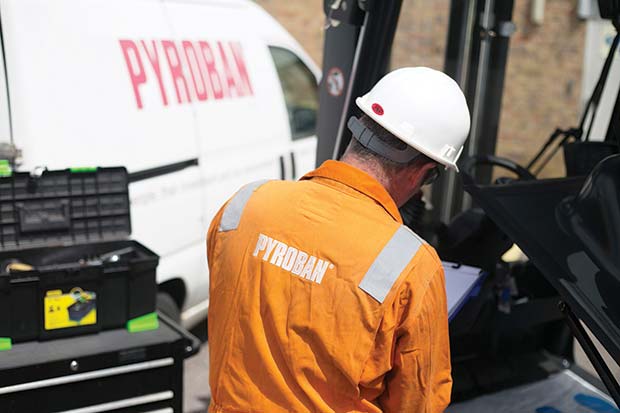Safety company Pyroban is offering users and suppliers of explosion proof forklifts guidance ahead of the introduction of the new ATEX Directive 2014/34/EU which took effect from 20th April 2016.

The Directive, which concerns equipment and protective systems intended for use in potentially explosive atmospheres, replaces the current ATEX Directive 94/9/EC as part of a new, consistent Legislative Framework for EU Directives.
“The fundamental basis of the current ATEX Directive is not changed, and while this will minimise impact on manufacturers and suppliers of explosion protection solutions, it may create confusion as to exactly what this means to companies, sales people and end users,” says Steve Noakes, Engineering Manager for Pyroban, the leading explosion proof forklift conversion company. “Maintaining safety in potentially explosive atmospheres is so important that it is essential to understand what these changes consist of, both for managers, operators and company legal departments”
Under the new Directive, Essential Safety & Health Requirements (ESHRs) remain the same, the equipment categories used to define the different explosion protection levels are unaffected (3G, 2G, 3D, 2D), and the certification procedures are also unchanged. Manufacturer self-certification still remains for Category 3 equipment for use in zone 2 and zone 22 applications.
However, there will be several changes to certification under the new Directive. New products placed on the market from 20th April 2016 will state the new ATEX Directive number 2014/34/EU on documentation instead of 94/9/EC and component level certificates issued after 20th April will now be called ‘EU Type Examination Certificate’ instead of ‘EC Type Examination Certificate’. The content of the EU Declaration of Conformity is also revised in the new Directive. Components and equipment having 3rd party certification to 94/9/EC remain valid under 2014/34/EU and do not need to be re-certified.
The new Legislative Framework places a higher emphasis on market surveillance and the expectations of EU member states to better police the markets, but as the ATEX Directive 2014/34/EU exists to control the requirements for producing and bringing a product into the market when new, aftersales activities will not be directly affected by the recent changes. The other notable ATEX Directive, 1992/92/EC, which affects the end user of the forklift is also not affected by the legislative changes and remains in its current form.
Steve Noakes explains further, “Although the 2014/34/EU ATEX Directive exists to govern the safe trade of Ex equipment and protection solutions by manufacturers, suppliers and importers, there are some important considerations for end users too. To ensure that safety levels are not compromised during the equipment’s service life, it is important that the end user maintains all Ex equipment adequately – as equipment becomes older the ‘Justification for Continued Use’ is the responsibility of the end user, not the manufacturer.”




Comments are closed.